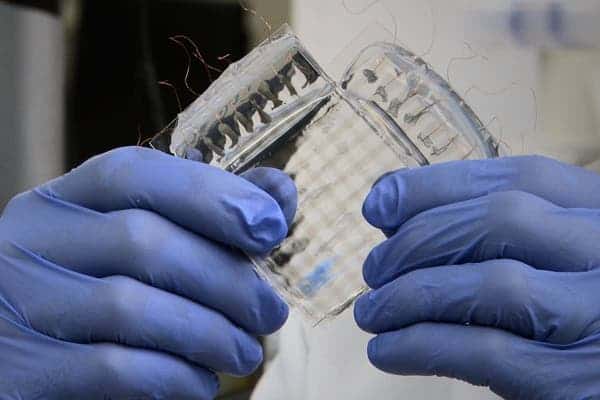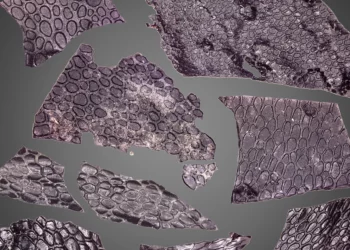
In the new mobile information age where smartphones have become an ever common part of our lives, there seems to be a dominant trend which tends to incorporate interactive touch screen capabilities to more and more consumer electronics. It’s pretty clear that our electronics are getting smarter day by day – I, for one, am still waiting for the next generation of vacuums to outwit me – and as such, the demand for innovative interactive tech is high.
Researchers at Stanford University have made a great forward in this sense after they developed a highly ductile smart-material, filled with sensors, while has the capability to stretch and return to its original size without a problem; much like the human skin. The material is made out of two layers of sillicon, coated by extremely thin single-walled carbon nanotubes, which basically act like two parallel plates. When one of the layers is pressed, the distance between the layers becomes thinner, the capacity of the sensor is increased. Silicone can store electrical charge, and thus whenever this charge is modified by pressing the plates, it is quantified by the sensors which can correlate the charge to a pressure. Basically, the material can feel, or rather sense.
RELATED: Scientists create artificial muscles from nanotubes
The highly important stretching ability is offered by the carbon nanotubes characteristics. After being sprayed on to the sillicone layer, they randomly positioned themselves. When they are tensioned, the nanotubes stretch orientating towards the stretch direction, only to revert to their exact initial position when released.
The stretchy sensor can detect a wide array of touches, according to Darren Lipomi, a postdoctoral researcher on the team. Just like skin, the material can sense whether it’s being pressed or pinched.
Applications are numerous, the most realistic example being the prosthetic industry. However, think of robots capable of extremely sensitive manipulations, instead of the stiff maneuvers conventional robots have today. You wouldn’t want to shake hands with a robotic arm, nowadays.






